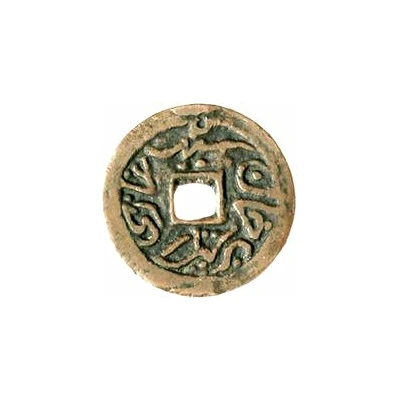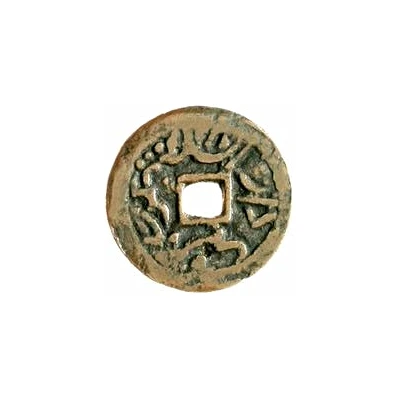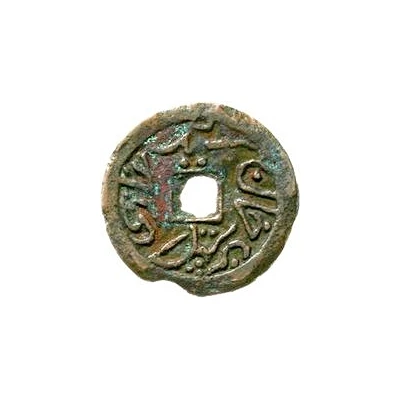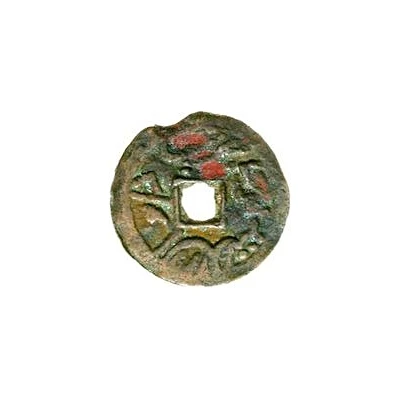


© Teutoburger Münzauktion
1 Cash - Rashidin Khan Kucha; with date
1281 (1865) year| Copper | 5.32 g | 25 mm |
| Issuer | Turkestan Khanate (Xinjiang region) |
|---|---|
| Khan | Rashidin Khan Khoja (1863-1867) |
| Type | Standard circulation coin |
| Year | 1281 (1865) |
| Calendar | Islamic (Hijri) |
| Value | 1 Cash |
| Currency | Cash (1864-1867) |
| Composition | Copper |
| Weight | 5.32 g |
| Diameter | 25 mm |
| Thickness | 1.2 mm |
| Shape | Round with a square hole |
| Technique | Cast |
| Orientation | Medal alignment ↑↑ |
| Demonetized | Yes |
| Updated | 2024-10-04 |
| Numista | N#257910 |
|---|---|
| Rarity index | 90% |
Reverse
Arabic inscription surrounding the hole, all with date at the top.
Script: Arabic
Lettering:
١٢٨١
زرب دار السلطانات كوجا
Translation:
1281 (for year 1864)
Zarb dar al-Sultanat Kuqa (Struck at the Sultanate of Kucha)
Edge
Plain
Comment
With influence of rebellion uprisings during Tongzhi era of the Qing dynasty, Rashidin Khoja proclaimed a holy war in 1862. He made himself the Khan of Turkestan in 1863, establishing his capital in Aksu. During his rule, coins were casted using the regular red copper, square-holed pattern but with Arabic inscriptions. The Khanate came to an end in 1867, when Rashidin Khoja was murdered.Interesting fact
One interesting fact about this coin is that it was issued during the reign of Rashidin Khan, who was the last khan of the Turkestan Khanate, a state that existed in the Xinjiang region of China during the 19th century. Despite being the last khan, Rashidin Khan's rule was marked by significant political and economic reforms, including the introduction of a new currency, which this coin was a part of. This coin, with its unique design and historical significance, offers a fascinating glimpse into the history of this region and the reign of Rashidin Khan.

